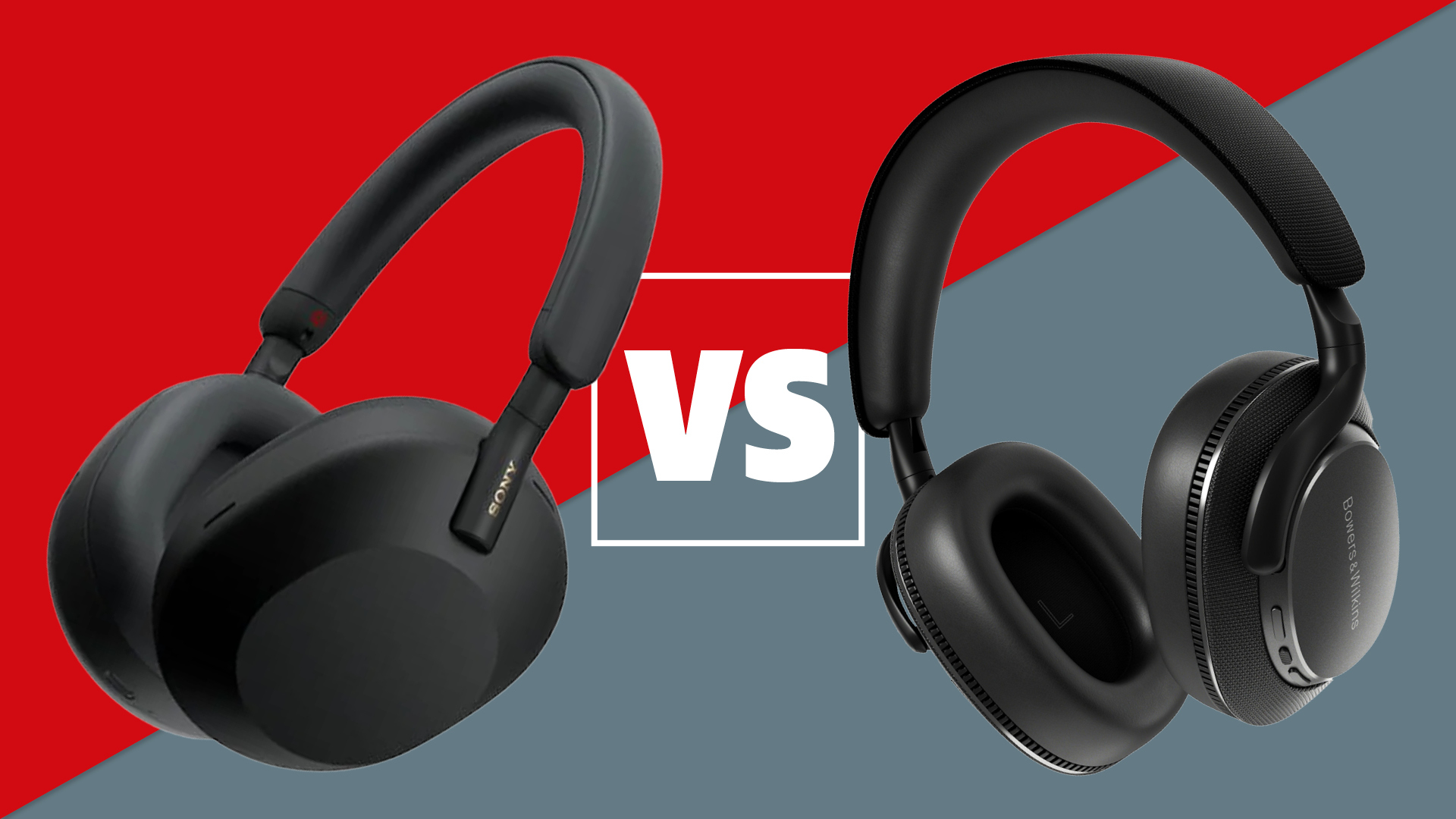Sony WH-1000XM5 vs Bowers & Wilkins Px7 S3: which five-star wireless headphones are better?
Signature Sony sound or the best of B&W?

Bluetooth: 5.2
Codec support: SBC, AAC, LDAC
Noise cancelling? Yes
Battery life: 30 hours (ANC on), 40hrs (ANC off)
Finishes: x 3 (black, silver, white)
Weight: 250g
For
- Excellent sonic clarity
- More open delivery than Px7 S3
- Better ANC than the B&W
Against
- Px7 S3 sound more refined and detailed
- Build isn't as premium as B&W rivals
- Missing some features compared with PX7 s3
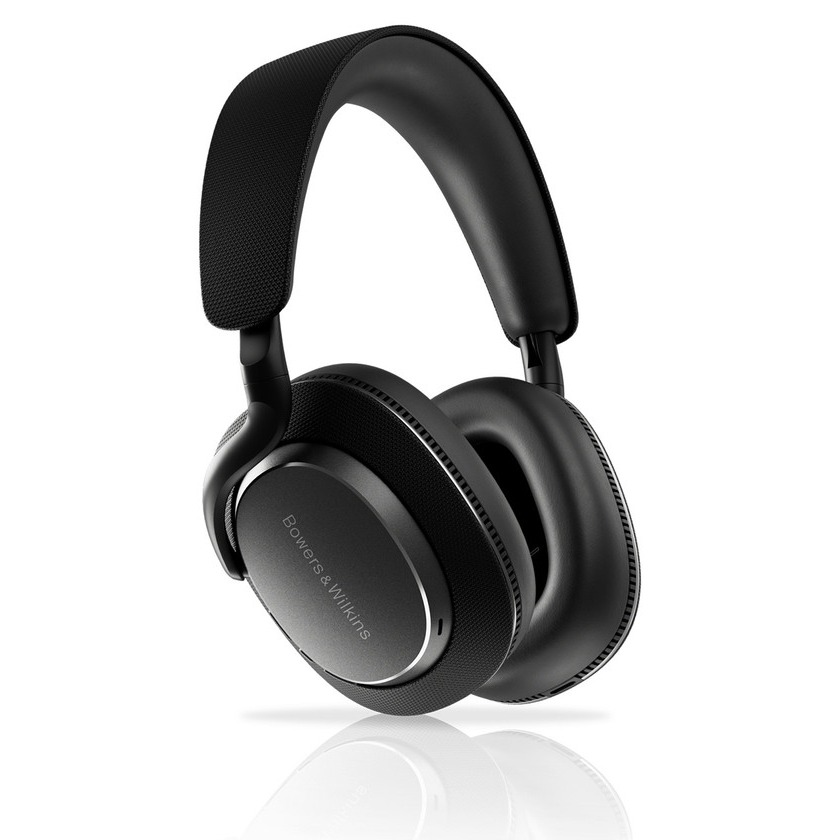
Bluetooth: 5.3
Codec support: SBC, AAC, aptX HD, aptX Classic, aptX Lossless, aptX Adaptive
Noise cancelling? Yes
Battery life: 30 hours (with ANC on)
Finishes: x 3 (black, blue, white)
Weight: 300g
For
- Exceptional sonic performance
- Even more detailed than the XM5
- Match the Sony for features
- Nicer looking than the XM5
Against
- More expensive than Sony cans
- Sony ANC is more in-depth
- Some features not yet available
In the world of premium wireless headphones, the Sony WH-1000XM5 rule the current roost. Though we like many of their rivals very much, including the five-star Bose QuietComfort Ultra Headphones and the Sennheiser Momentum 4 Wireless, the Sony over-ears are our Award-winners for a reason: they're sonically superb, nicely made and have a feature set that makes you feel positively spoiled.
The Bowers & Wilkins Px7 S3, however, are here to ruin Sony's party. Acting as a sequel to the excellent Bowers & Wilkins Px7 S2e, the new B&W cans are a tad more costly than their Sony rivals, and landed with the promise of being the brand's "most advanced and capable wireless headphones" ever.
If that's truly the case, the WH-1000XM5 might just be put in the shade by their newcomer rivals. Do the Sony Award-winners have enough firepower to fight back, or are the Px7 S3 simply too hot to handle?
- Check out our Sony WH-1000XM6 rumours page
Sony WH-1000XM5 vs Bowers & Wilkins Px7 S3: price
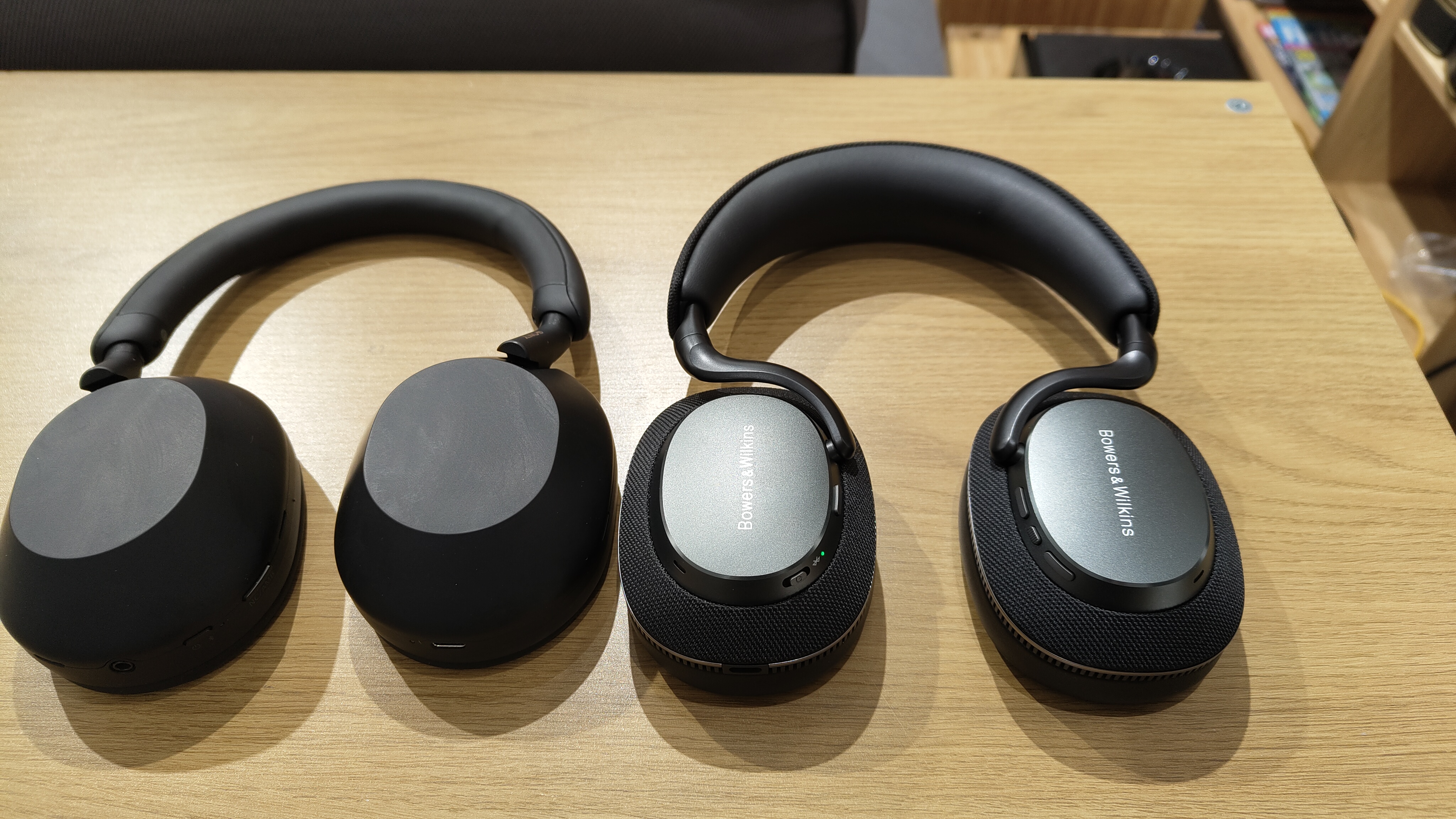
As hinted above, the Bowers & Wilkins Px7 S3 are, for now, more expensive than the Sony WH-1000XM5. The XM5 debuted at around £380 / $399 / AU$550, but the passage of time and the expectation that a next-gen pair will land soon has dropped those figures down to around £249 / $330, though the Aussie price seems stable at AU$550.
The Px7 S3 haven't had time to drop significantly since launch. Costing £399 in the UK, €429 in Europe and AU$699 in Australia, they're not miles ahead of the XM5 in terms of their original RRP. Give it a few months and discounts will start to cut into those numbers, even if it will take a while longer for prices to go as low as their Sony rivals.
Note that we don't have prices or availability for the B&W cans in the US just yet, but we'll let you know as soon as further details emerge.
Either way, the Sony Award-winners are the way to go if you want a brilliant bargain.
**Winner: Sony WH-1000XM5**
Sony WH-1000XM5 vs Bowers & Wilkins Px7 S3: build and design
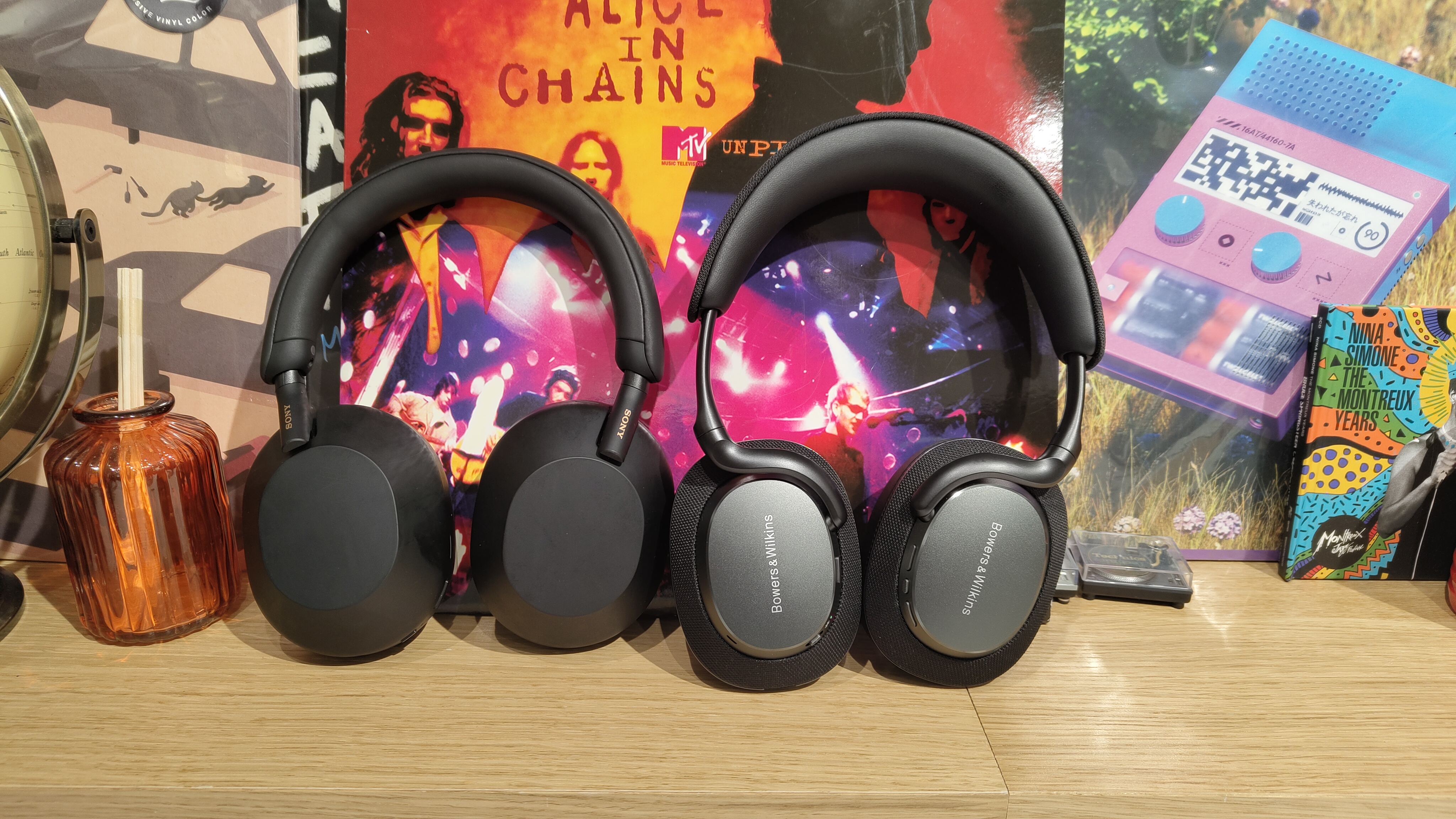
Place them side by side and ask the average person on the street to assess which is the more premium pair and, barring a few errant guesses, we'd imagine the vast majority would pick the Px7 S3. The Sony WH-1000XM5 are a nice set of headphones, but the Px7 S3 are serious about style and substance, and it shows.
Neither pair folds away completely, though both sets of earcups rotate sideways via a smooth and seamless motion.
The Sony cans are also lighter when placed on the scales, clocking in at 250g in comparison with the more significant 300g weight of the Px7 S3. The latter cans are certainly lighter than their predecessors, though, with B&W making a serious effort to slim down their outward profile in a bid to save weight and improve comfort, but it's not enough to match Sony when facing off for the pre-fight weigh-in. Still, the B&Ws’ more premium materials, in contrast with Sony's choice of cheaper-feeling plastic, does make them the heavier choice.
Comfort-wise, we struggle to imagine most wearers having a problem with either. The Sony over-ears offer a section of memory foam in the middle of the headband covered in synthetic leather, as well as memory-foam earpads. As we stated in our review, "comfort levels are up there with the best" as the Sony deliver "just the right amount of clamping force", feeling secure and comfy without threatening to crush our ears.
It's a similar story when switching over to the B&W. The Px7 S2e were always a nice pair of headphones to wear, but we feel that the Px7 S3, thanks to their increased lightness and slightly softer earpads, offer a more forgiving and accessible fit than their predecessors. Our ears did heat up slightly during longer listening periods, but rarely to the point at which it became a serious issue.
Both pairs are furnished with their own rather nice carry case, but things deviate in terms of on-unit controls. The XM5 opt for on-cup touch controls to manage their user experience, while the B&W cans stay true to form by using an array of physical buttons. Neither system is badly integrated, so this comes down to whether you prefer swiping and tapping an earcup or if you like the familiarity of physical toggles.
All in all, it's hard to escape how much more premium and well-built the Px7 S3 seem when put up against the XM5. To our eyes and hands, they're a gorgeous set of wireless headphones.
**Winner: Bowers & Wilkins Px7 S3**
Sony WH-1000XM5 vs Bowers & Wilkins Px7 S3: noise cancelling and call quality
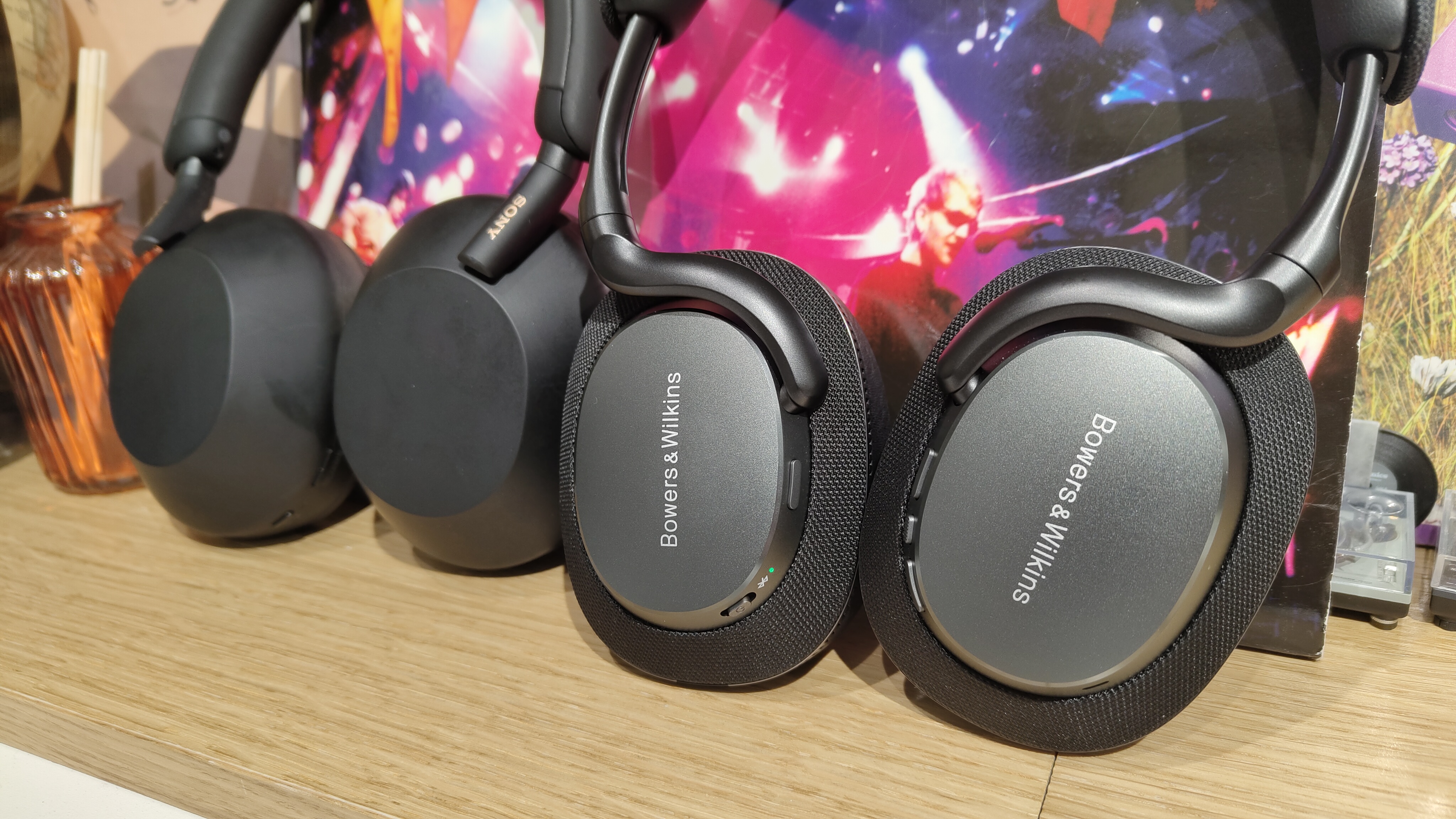
Noise cancelling is on the menu no matter your choice, although it's a touch more in-depth with the XM5. The Sony headphones boast impressive ANC, offering a standard mode alongside Ambient mode and the automatically adjusting 'Adaptive Sound Control' setting.
The Px7 S3 have two main modes – standard ANC and a passthrough (ambient) setting – and while the experience is decent, the class-leading performance of the XM5 gives them the edge. The XM5 grant a more isolated, all-encompassing feeling when noise cancelling is switched on, whereas the B&W go for a more natural approach which takes the edge off noises without shielding you from them by placing you in an impermeable sonic bubble, an effect we know some users find disconcerting anyway.
Voice calls are handled capably by both, although they have their given strengths and weaknesses. The XM5 sound a little more natural when speaking but aren't quite so great at blocking out all exterior noises, whereas the B&W are better at isolating you from the outside world but not quite as natural in their reproduction of human speech. Still, both sets grant strong levels of clarity and authenticity during tests, so you won't be disappointed by either.
**Winner: Sony WH-1000XM5**
Sony WH-1000XM5 vs Bowers & Wilkins Px7 S3: features
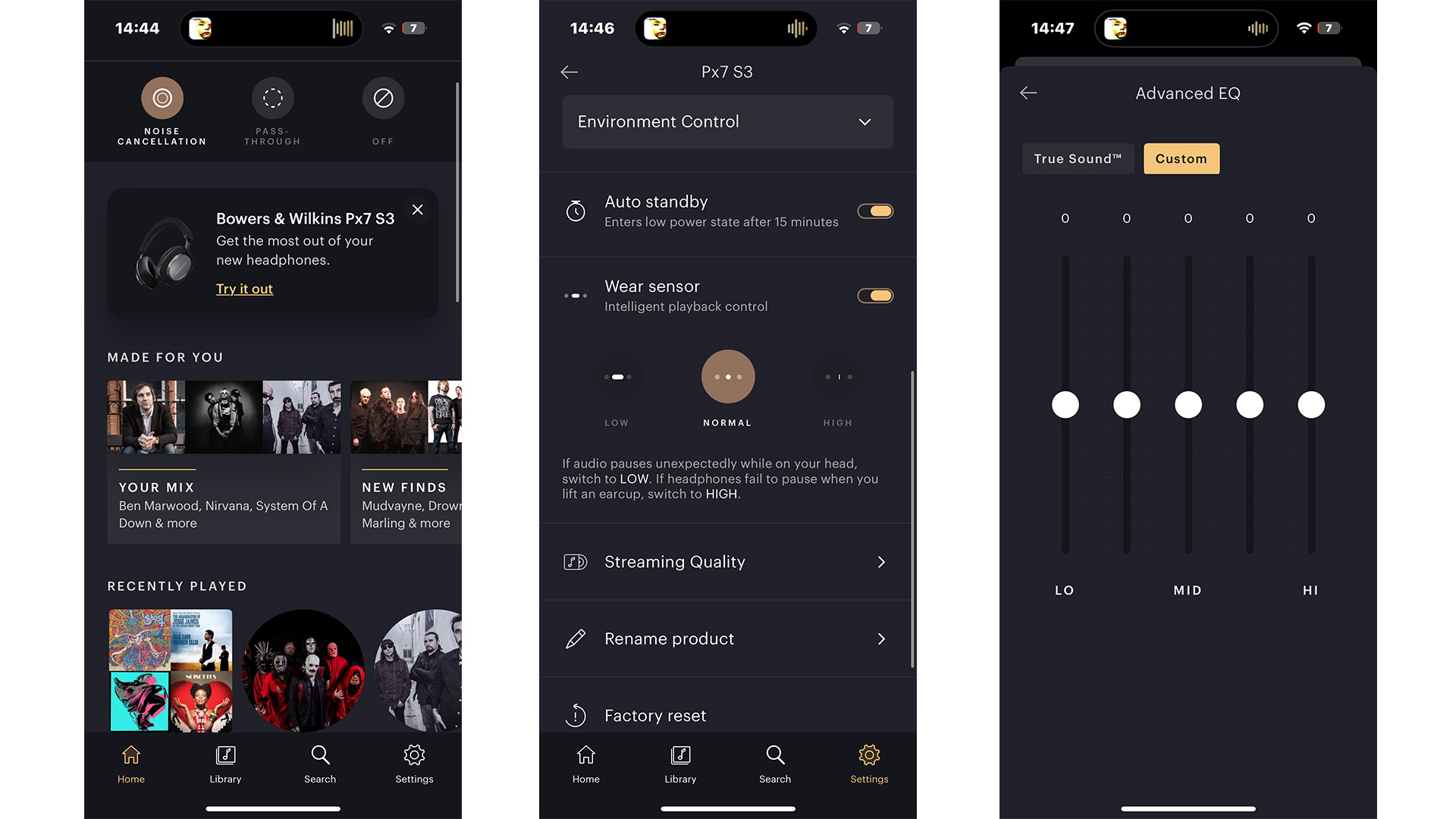
Wireless headphones are expected to go big on features at this level, and in fairness, both pairs deliver here.
They're neck and neck on the battery life front, offering 30 hours from a single charge with ANC turned on. Bowers & Wilkins has an ace up its sleeve, as its wireless cans offer a stunning seven hours of playtime from a 15-minute quick charge, while the XM5 offer five hours from a ten-minute boost. Impressive across the board, then.
It's with the more esoteric features offered that these two contenders diverge. The XM5s' unique selling points are DSEE Extreme upscaling for cleaning up poor-quality files and recordings, as well as the useful 'Speak to Chat' which automatically pauses your music when you start talking. As you'd expect from Sony cans, there's also support for the higher-res LDAC Bluetooth codec if you have a compatible source, but no form of aptX on board.
The B&W rivals, meanwhile, have the high-quality aptX Adaptive and aptX Lossless codecs to shout about, as well as 24-bit/96kHz wired listening when using USB-C. They're also furnished with Auracast, and LE Audio support coming in the future, meaning that the Px7 S3 can receive audio transmissions from compatible broadcast sources. If Auracast does take off in a big way, it could be a real string to their bow (and a boost for subsequent B&W sequels).
For connecting to multiple source devices simultaneously, both sets of Bluetooth headphones are furnished with Bluetooth Multipoint.
In terms of apps, we're dealing with two very professional platforms. The Sony Sound Connect app (formerly the Sony Headphones app) isn't that glamorous, but it's an in-depth platform that offers deep levels of personalisation, be it via a five-band equaliser or the various ANC modes on offer. We like the Bowers & Wilkins Music app too, a stylish place from which you can change multiple wearing functionality settings, access a five-band EQ and access your favourite streaming services in one place.
A very close one, this, with healthy feature sets offering high levels of performance across the full gamut of key areas. Like a school sports day, everyone's a winner!
**Winner: Draw**
Sony WH-1000XM5 vs Bowers & Wilkins Px7 S3: sound quality
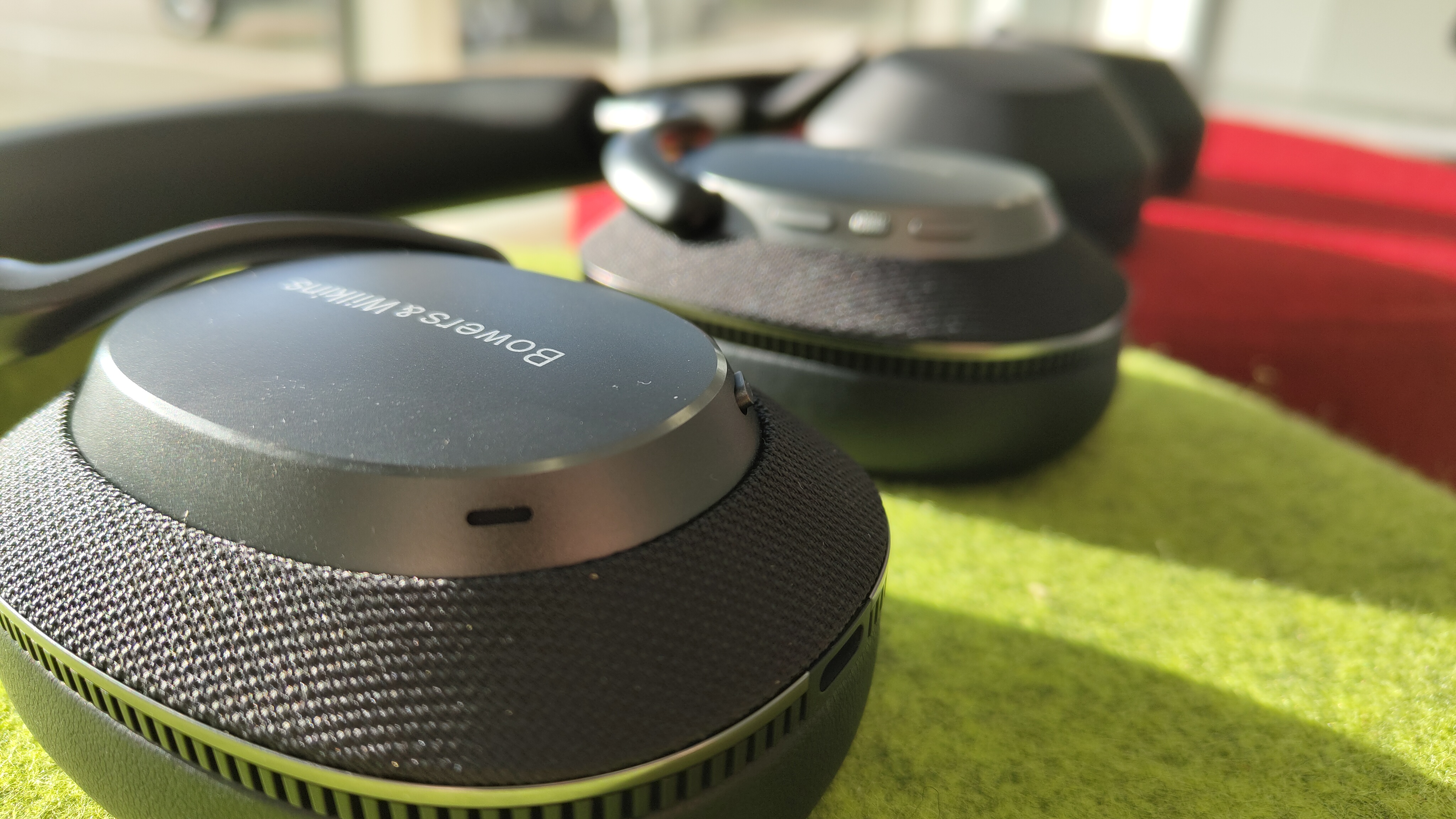
The WH-1000XM5 are some of the best-sounding wireless headphones Sony has ever made, building on the peppy, entertaining character of their predecessors while bringing in new levels of detail, refinement and subtlety and elevating the XM line to new heights. We love a lot of things about the XM5, but their sonic performance is the key reason we gave them a five-star rating and a What Hi-Fi? Award.
As we stated in our review: "The WH-1000XM5 possess all the elements that have made the previous generations class-leaders at the money, including that effortlessly musical sound, but this latest generation manages to deliver even greater clarity and a more open presentation."
They're especially good with lower frequencies, handling bass notes with exceptional precision and exposing greater detail and differentiation between notes that we find grants tracks a new and spectacular dimension.
The Bowers & Wilkins Px7 S3, meanwhile, live up to claims that these are the best wireless headphones the brand has ever produced. Packed with textural insight and displaying a forensic yet rarely analytical hunger for bringing out masses of musical information, they're a deeply impressive pair of over-ears. Detail-wise, they outstrip Sony's effort; they might even be more detailed than the more expensive Dali IO-8, and that is not something we say lightly.
In terms of presentation, they're a different breed from the Sony cans. The XM5 have more space and a greater sense of musical 'remove' (for better or for worse), whereas the Px7 S3 drop you into the centre of your music. As our review of the latter stated: "The B&W have an intimate character that puts you in the eye of the musical storm no matter what you choose to feed them."
They're also immensely entertaining. With their cultured bass reproduction and powerful feeling of punch, the Px7 S3 are rarely boring. They are, in fact, immensely rewarding headphones that bring out the bite and dynamism of tracks with ease, so that anything from John Williams' Duel Of The Fates to Slipknot's Left Behind becomes a thrilling, immersive experience.
This is a tough one, but for us, the Px7 S3 have raised the bar to new heights. The XM5 are still brilliant, but the B&W newbies have the detail, drive and dynamism to put them in the shade. A stunning result for Bowers & Wilkins.
**Winner: Bowers & Wilkins Px7 S3**
Sony WH-1000XM5 vs Bowers & Wilkins Px7 S3: verdict
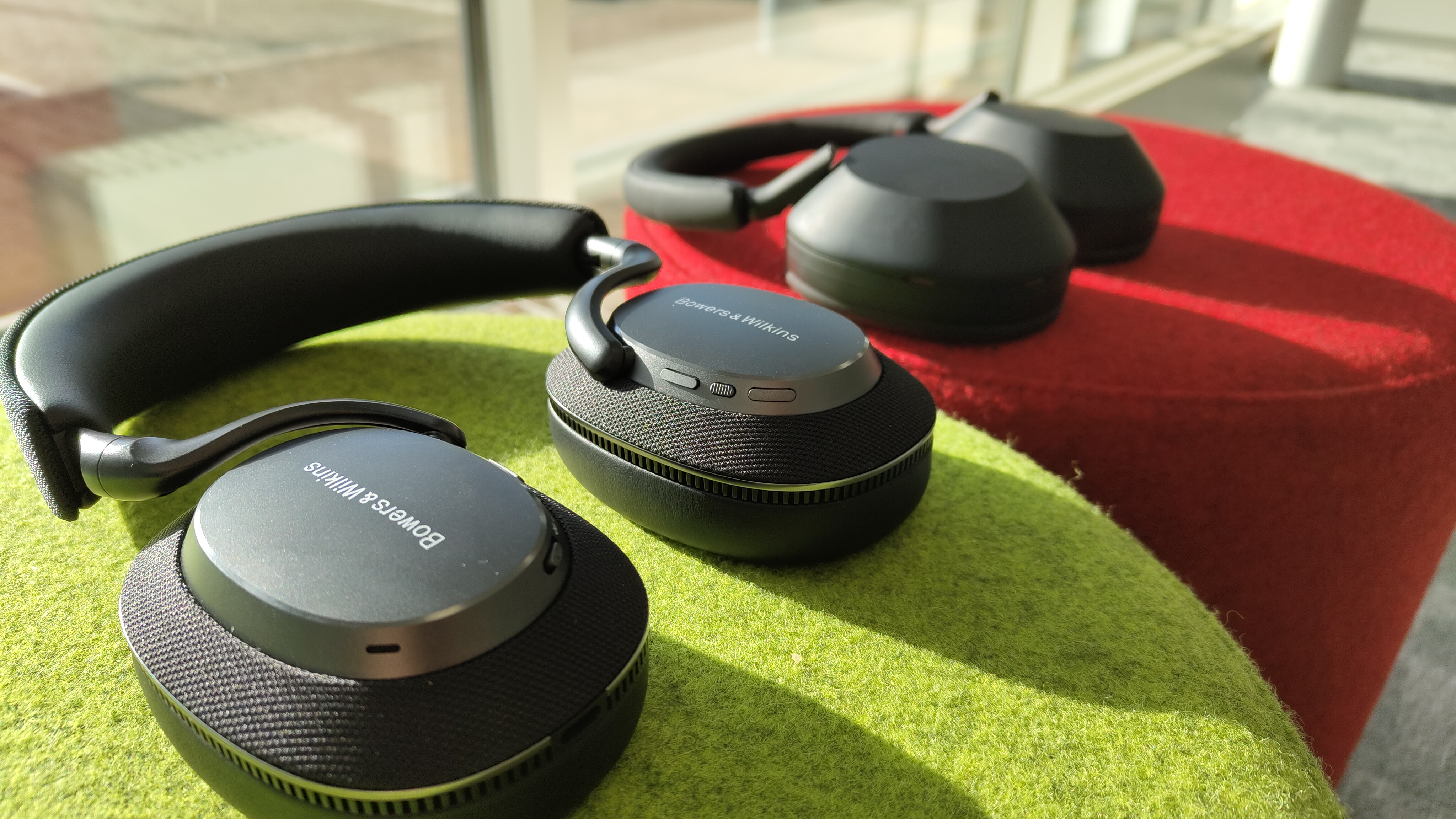
It was always going to take something special to oust the Sony WH-1000XM5. With the Px7 S3, Bowers & Wilkins might just have managed it thanks to its latest headphones' exceptional performance and beautiful construction.
Things aren't ever quite that simple, of course. The Px7 S3 are more costly currently than the XM5, so in terms of sound-per-pound performance, things are a lot tighter than they may initially appear. Then there's the fact that Sony will, at some point rather soon, be introducing the WH-1000XM6 to challenge B&W's latest contenders. That, we expect, will be a very tasty battle indeed – Sony will have become accustomed to its current wireless supremacy, and it won't give up without a fight.
For now, you're left with a choice between two exceptional pairs of wireless headphones that have raised the bar for Bluetooth brilliance at this level. If you have one eye on your finances but still want premium performance, the XM5 are a stellar choice. If you want the latest and arguably greatest choice in this particular tranche of the market, the Px7 S3 put forward an exceptionally attractive case.
MORE:
Here are the best over-ear headphones on the market
Try out our 29 of the best tracks for testing bass
Best Sony headphones 2025: top pairs recommended by our expert reviews team
Get the What Hi-Fi? Newsletter
The latest hi-fi, home cinema and tech news, reviews, buying advice and deals, direct to your inbox.

Harry McKerrell is a senior staff writer at What Hi-Fi?. During his time at the publication, he has written countless news stories alongside features, advice and reviews of products ranging from floorstanding speakers and music streamers to over-ear headphones, wireless earbuds and portable DACs. He has covered launches from hi-fi and consumer tech brands, and major industry events including IFA, High End Munich and, of course, the Bristol Hi-Fi Show. When not at work he can be found playing hockey, practising the piano or trying to pet strangers' dogs.
You must confirm your public display name before commenting
Please logout and then login again, you will then be prompted to enter your display name.
